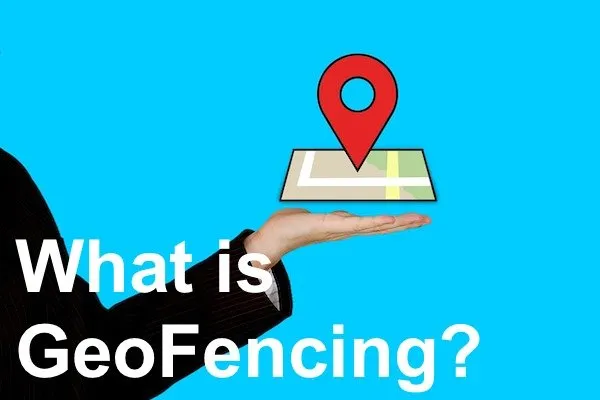LOCATION-BASED MARKETING SOLUTIONS: Enhancing Customer Engagement and Driving Business Growth
In today’s digital landscape, location-based marketing solutions are revolutionizing the way businesses connect with their target audience. By harnessing the power of real-time location data, brands can deliver personalized and relevant messages to consumers, right when and where they are most likely to convert.
With a distinctive brand voice that embraces innovation and customer-centricity, we dive into the world of location-based marketing solutions and explore how they can drive business growth and enhance customer engagement. From geofencing and beacons to proximity marketing and hyperlocal targeting, we unravel the potential of these cutting-edge technologies and provide actionable insights for brands aiming to stay competitive in today’s fast-paced market.

What is Location-Based Marketing?
Location-based marketing refers to the practice of delivering targeted marketing messages or content to individuals based on their current or past physical location. It leverages geolocation technology and user data to enable brands to reach the right people, at the right time, and in the right place. This form of marketing allows businesses to tap into consumers’ real-time context and deliver highly relevant and personalized experiences.
Location-based marketing encompasses various strategies and tactics, such as geofencing, beacons, proximity marketing, and hyperlocal targeting. These solutions provide businesses with the ability to engage with their target audience in a more targeted and meaningful way, ultimately driving better results and ROI.
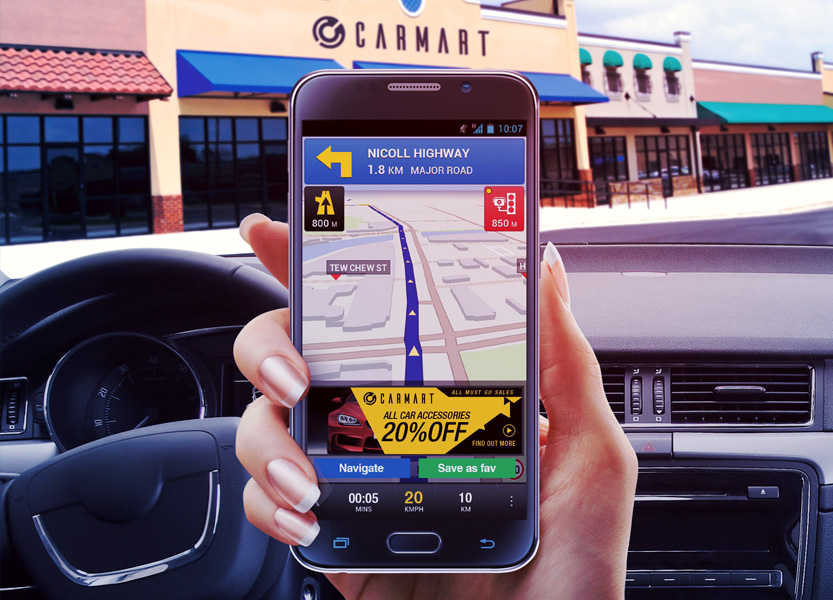
Importance of Location-Based Marketing
Location-based marketing plays a crucial role in today’s highly competitive business landscape. By utilizing location data, brands can gain a deeper understanding of their customers’ behaviors, preferences, and purchase patterns. This valuable insight allows businesses to tailor their marketing efforts and create highly personalized experiences that resonate with their audience.
One of the key benefits of location-based marketing is its ability to deliver messages at the right moment. By leveraging real-time location data, brands can reach consumers when they are in close proximity to a physical store or when they are most likely to make a purchase decision. This creates a sense of urgency and relevance, increasing the chances of conversion.
Additionally, location-based marketing helps businesses optimize their marketing budgets by targeting specific geographic areas or demographics. Instead of casting a wide net and hoping for the best, brands can focus their resources on reaching the most relevant audience, maximizing their marketing efforts’ impact.

Benefits of Location-Based Marketing Solutions
Location-based marketing solutions offer a wide range of benefits for businesses looking to enhance their customer engagement and drive business growth. Let’s explore some of the key advantages:
1. Personalized and Relevant Experiences
Location-based marketing allows brands to deliver highly personalized and relevant experiences to their audience. By understanding consumers’ real-time context, businesses can tailor their messages and offers based on their location, preferences, and behavior. This level of personalization helps build stronger connections with customers and increases their engagement with the brand.
2. Increased Foot Traffic and Conversions
One of the primary goals of location-based marketing is to drive foot traffic to physical stores. By sending targeted messages to consumers when they are near a store, businesses can entice them to visit and make a purchase. Studies have shown that location-based marketing can significantly increase foot traffic and drive conversions, leading to higher sales and revenue.
3. Improved Customer Loyalty and Retention
Location-based marketing allows brands to engage with customers even after they leave the store. By leveraging location data, businesses can send personalized offers, recommendations, or loyalty rewards to keep customers coming back. This not only helps foster customer loyalty but also increases the chances of repeat purchases and long-term customer retention.
4. Enhanced Data Insights and Analytics
Location-based marketing provides valuable data insights and analytics that can help businesses make more informed marketing decisions. By analyzing location data, brands can gain insights into customer behaviors, preferences, and trends. This data can then be used to optimize marketing campaigns, target specific demographics, and identify new opportunities for growth.

Location-Based Marketing Statistics
To understand the impact and relevance of location-based marketing solutions, let’s take a look at some compelling statistics:
- According to a study by Google, 84% of smartphone users turn to their devices to help them make decisions while out shopping.
- Research conducted by Pew Research Center found that 74% of smartphone owners use their devices to get real-time location-based information.
- A report from RetailDive states that 82% of smartphone users consult their phones while standing in a store deciding which product to buy.
- Research by Think with Google reveals that 76% of people who search for something nearby on their smartphones visit a related business within a day, and 28% of these searches result in a purchase.
These statistics highlight the growing reliance on mobile devices and the importance of location-based marketing in capturing consumers’ attention and driving them to take action.
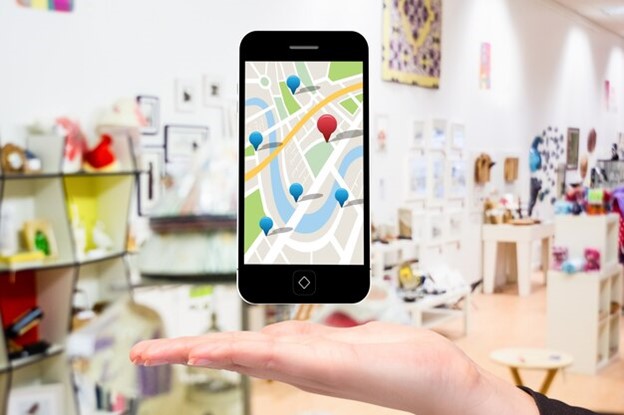
How Location-Based Marketing Works
Location-based marketing relies on the integration of various technologies and data sources to deliver personalized messages to consumers. Here’s a brief overview of how location-based marketing works:
- Geolocation Technology: Location-based marketing solutions utilize geolocation technology, such as GPS, Wi-Fi, or cellular networks, to determine the precise location of a user’s device. This enables businesses to deliver messages based on the user’s proximity to a specific location.
- User Data Collection: Brands collect user data through various channels, such as mobile apps, websites, or loyalty programs. This data includes information like demographics, preferences, and past purchase behavior. By combining location data with user data, brands gain a deeper understanding of their audience and can deliver more targeted messages.
- Real-time Triggering: When a user’s device enters a predefined geographic area, such as a store or a specific location, it triggers the delivery of a targeted message. This can be in the form of a push notification, SMS, email, or in-app message. The message can contain personalized offers, recommendations, or information related to the user’s location.
- Measurement and Optimization: Location-based marketing solutions provide businesses with tools and analytics to measure the effectiveness of their campaigns. Brands can track metrics like foot traffic, conversions, and customer engagement to optimize their strategies and improve results over time.

Creating a Location-Based Marketing Strategy
To harness the power of location-based marketing, businesses need to develop a comprehensive strategy. Here are some key steps to consider when creating a location-based marketing strategy:
1. Define Objectives and Goals
Start by defining clear objectives and goals for your location-based marketing efforts. What do you want to achieve? Whether it’s driving foot traffic, increasing sales, or improving customer loyalty, clearly define your goals to guide your strategy.
2. Understand Your Audience
Gain a deep understanding of your target audience, their preferences, and behaviors. Analyze your customer data and location insights to identify patterns and trends. This will help you tailor your messages and offers to resonate with your audience.
3. Choose the Right Technology and Tools
Select the appropriate location-based marketing solutions and technologies that align with your business goals and target audience. Whether it’s geofencing, beacons, or proximity marketing, consider the capabilities and limitations of each technology before implementation.
4. Craft Compelling and Relevant Messages
Create personalized and engaging messages that are relevant to your audience’s location and context. Use segmentation and targeting to deliver the right message to the right people at the right time. Ensure your messages provide value and incentivize action.
5. Test, Measure, and Optimize
Continuously test and measure the performance of your location-based marketing campaigns. Track metrics like foot traffic, conversions, and customer engagement. Use the insights gained to optimize your strategy, messaging, and targeting for better results.

Tools and Technologies for Location-Based Marketing
Location-based marketing solutions rely on a variety of tools and technologies to deliver personalized experiences to consumers. Let’s explore some of the key tools and technologies businesses can use:
1. Geofencing
Geofencing technology allows businesses to define virtual boundaries around specific geographic areas. When a user’s device enters or exits the defined area, it triggers the delivery of targeted messages. Geofencing can be used to send personalized offers, notifications, or recommendations to users based on their location.
2. Beacons
Beacons are small devices that use Bluetooth Low Energy (BLE) technology to communicate with nearby smartphones. They can be placed in physical stores or specific locations to deliver targeted messages to users when they are in close proximity. Beacons can be used to provide personalized offers, product information, or navigation assistance.
3. Proximity Marketing
Proximity marketing leverages Bluetooth technology to send targeted messages to users when they are in close proximity to a specific location or point of interest. It can be used to deliver personalized offers, loyalty rewards, or information about nearby attractions. Proximity marketing can be highly effective in driving foot traffic and engaging with customers in real-time.
4. Hyperlocal Targeting
Hyperlocal targeting allows businesses to target users based on their precise location within a small radius. It enables highly localized and personalized marketing messages that are relevant to users’ immediate surroundings. Hyperlocal targeting can be used to promote nearby events, recommend nearby restaurants, or offer real-time deals.

Examples of Successful Location-Based Marketing Campaigns
To inspire your location-based marketing efforts, let’s take a look at some successful campaigns that have utilized these strategies:
1. Starbucks: Mobile Order & Pay
Starbucks implemented a location-based mobile ordering system that allows customers to place their orders in advance and pick them up at a nearby store. The system uses geolocation technology to determine the customer’s proximity to a Starbucks location and prepares the order accordingly. This campaign not only improved customer convenience but also increased in-store foot traffic and sales.
2. Nike: Nike+ Run Club
Nike utilized geolocation technology to create the Nike+ Run Club app. The app tracks users’ running routes and provides personalized coaching and motivation based on their location and performance. It also allows users to discover nearby running routes, events, and challenges. This campaign not only encouraged user engagement but also promoted Nike’s brand as a fitness and lifestyle authority.
3. Burger King: Whopper Detour
Burger King launched the Whopper Detour campaign, which used geofencing technology to offer customers one-cent Whoppers when they were within 600 feet of a McDonald’s restaurant. This campaign successfully drove foot traffic to Burger King locations and generated buzz and media coverage.
These examples highlight the power of location-based marketing in driving engagement, foot traffic, and brand awareness. By leveraging the right tools and strategies, businesses can create impactful campaigns that resonate with their target audience.
Location-based marketing solutions have transformed the way businesses engage with their target audience. By leveraging real-time location data and innovative technologies, brands can deliver personalized and relevant experiences that drive customer engagement and business growth. Whether it’s through geofencing, beacons, proximity marketing, or hyperlocal targeting, location-based marketing offers a range of benefits, from increased foot traffic and conversions to improved customer loyalty and retention.
To succeed in location-based marketing, businesses need to develop a well-defined strategy, utilize the right tools and technologies, and continually optimize their campaigns based on data and insights. By understanding the challenges and considerations associated with location-based marketing, brands can overcome obstacles and create impactful campaigns that capture attention and drive results.
As the digital landscape continues to evolve, location-based marketing will remain a powerful tool for businesses aiming to stay competitive in today’s fast-paced market. By embracing the potential of location-based marketing solutions, brands can connect with their audience on a deeper level and create memorable experiences that drive lasting relationships and business success.
- what is geofencing marketing
How does geofencing advertising work?
Geofencing advertising is a powerful marketing strategy that allows businesses to create virtual boundaries around specific geographic areas, such as a shopping mall or a city block. When a user enters this designated area, they can be served with targeted ads on their mobile devices. But how does it all work?
Geofencing advertising relies on location-based technology, such as GPS or Wi-Fi, to determine a user’s proximity to a specific area. Once a user crosses the virtual boundary, their mobile device’s unique identifier is captured, and they are added to a target audience list. This list can then be used to deliver highly personalized and relevant ads to the users within the geofenced area.
To ensure the accuracy and effectiveness of geofencing advertising, businesses need to partner with a reliable geofencing provider. These providers use sophisticated algorithms and data analysis to create precise and customizable virtual boundaries. They also offer real-time tracking and reporting, allowing businesses to monitor the performance of their geofencing campaigns.
Overall, geofencing advertising works by leveraging the power of location-based technology to deliver targeted ads to users when they are in close proximity to a specific area. This technology-driven approach allows businesses to reach their target audience at the right time and place, increasing the chances of engagement and conversion.
Benefits of geofencing advertising
Geofencing advertising offers a wide range of benefits for businesses looking to enhance their marketing efforts. Let’s explore some of the key advantages of this innovative advertising strategy.
- Increased relevance and personalization: Geofencing advertising allows businesses to deliver highly targeted ads to users based on their location. This level of relevance and personalization significantly increases the chances of engagement and conversion. By reaching users when they are near your physical store or at specific events, you can deliver ads that are timely and contextually relevant.
- Improved conversion rates: By targeting users who are already in close proximity to your business, geofencing advertising eliminates barriers and makes it easier for potential customers to engage with your brand. This proximity-based targeting has been proven to improve conversion rates, as users are more likely to take action when the advertised offer is within reach.
- Enhanced brand visibility: Geofencing advertising allows businesses to increase their brand visibility by delivering ads to users in specific geographic areas. This targeted approach ensures that your message reaches the right audience, increasing the chances of brand recognition and recall. By creating virtual boundaries around high-traffic areas or competitor locations, you can effectively capture the attention of potential customers.
- Cost-effectiveness: Geofencing advertising can be a cost-effective marketing strategy, especially when compared to traditional forms of advertising. By targeting users within a specific geographic area, businesses can avoid wasting resources on users who are unlikely to be interested in their products or services. This precision targeting helps maximize the ROI of advertising campaigns.
- Data-driven insights: Geofencing advertising provides businesses with valuable data and insights that can be used to optimize future marketing efforts. By analyzing user behavior within the geofenced area, businesses can gain a deeper understanding of their target audience’s preferences and interests. This data-driven approach allows for continuous improvement and refinement of advertising campaigns.
Overall, geofencing advertising offers numerous benefits for businesses, including increased relevance and personalization, improved conversion rates, enhanced brand visibility, cost-effectiveness, and data-driven insights. By leveraging the power of location-based technology, businesses can take their marketing efforts to new heights.
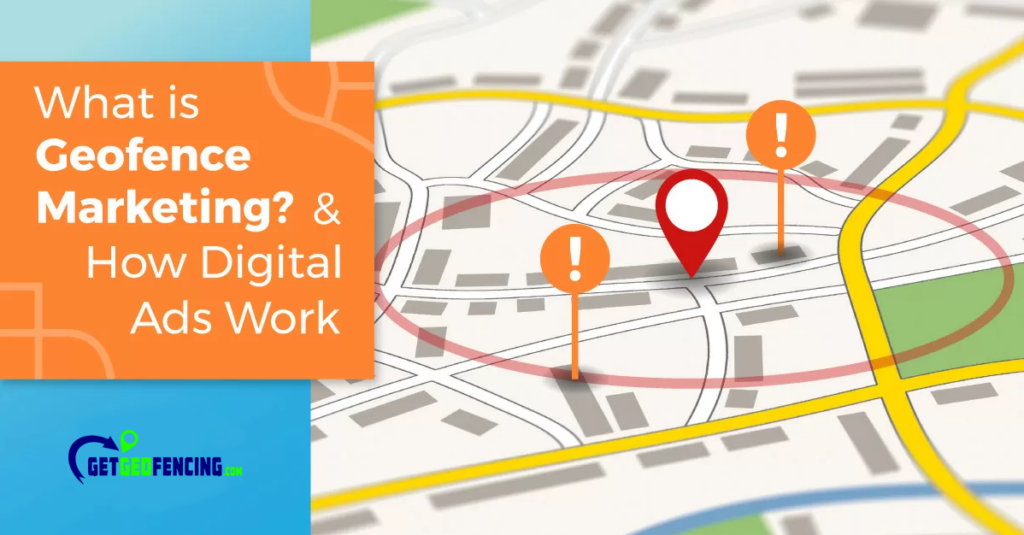
Examples of successful geofencing advertising campaigns
Geofencing advertising has been successfully used by various businesses to drive engagement, increase sales, and enhance brand awareness. Let’s take a look at some real-world examples of successful geofencing advertising campaigns.
- Starbucks: In an effort to increase foot traffic and drive sales, Starbucks implemented a geofencing campaign in collaboration with a popular food delivery app. The campaign targeted users who were within a certain radius of Starbucks stores during peak hours. These users were served with personalized offers and incentives to visit the nearest Starbucks location. The campaign resulted in a significant increase in store visits and sales.
- Nike: Nike utilized geofencing advertising to promote the launch of a new running shoe. The campaign targeted users who were in close proximity to popular running trails and fitness centers. These users were served with ads featuring the new shoe, along with personalized messages encouraging them to try it out. The campaign generated a high level of engagement and created buzz around the new product.
- IKEA: IKEA employed geofencing advertising to drive traffic to their brick-and-mortar stores during a major sale event. The campaign targeted users who were near competitor furniture stores or shopping malls. These users were served with ads highlighting IKEA’s competitive prices and exclusive deals. The campaign resulted in a significant increase in store visits and sales during the sale period.
These examples demonstrate the effectiveness of geofencing advertising in driving engagement, increasing sales, and enhancing brand awareness. By leveraging the power of location-based technology, businesses can create highly targeted and impactful campaigns that resonate with their target audience.
Factors to consider when implementing geofencing advertising
While geofencing advertising can be a powerful marketing strategy, there are several factors that businesses need to consider before implementing it. Let’s explore some of these factors to ensure a successful geofencing campaign.
- Target audience: Before implementing geofencing advertising, it’s essential to have a clear understanding of your target audience. Identify their demographic characteristics, interests, and behaviors to create highly targeted and relevant ads. Consider factors such as age, gender, income level, and purchasing habits to ensure that your geofencing campaign reaches the right audience.
- Virtual boundary design: The design of your virtual boundaries plays a crucial role in the success of your geofencing campaign. Take into account the specific areas you want to target, such as competitor locations, high-traffic areas, or events. Ensure that the boundaries are accurately defined to avoid serving ads to users who are outside the intended area.
- Messaging and creative: The messaging and creative elements of your geofencing ads should be compelling and resonate with your target audience. Craft clear and concise messages that highlight the value proposition of your products or services. Use eye-catching visuals and compelling calls-to-action to drive engagement and encourage users to take action.
- Timing: Timing is key in geofencing advertising. Consider the time of day and days of the week when your target audience is most likely to be in the geofenced area. This will ensure that your ads are served at the most opportune moments, increasing the chances of engagement and conversion.
- Tracking and analytics: Implement tracking and analytics tools to monitor the performance of your geofencing campaign. Track metrics such as impressions, clicks, conversions, and store visits to evaluate the effectiveness of your ads. Use these insights to make data-driven optimizations and improvements to your campaign.
By carefully considering these factors, businesses can maximize the effectiveness of their geofencing advertising campaigns and achieve their marketing goals.
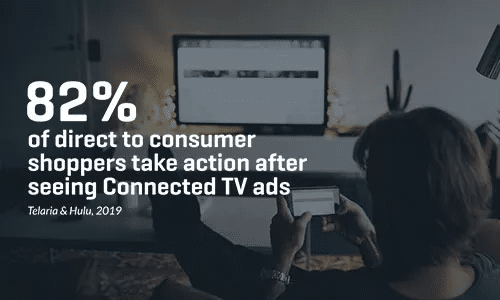
Targeting options in geofencing advertising
Geofencing advertising offers various targeting options that allow businesses to reach their desired audience with precision. Let’s explore some of the key targeting options available in geofencing advertising.
- Location-based targeting: Location-based targeting is at the core of geofencing advertising. Businesses can create virtual boundaries around specific geographic areas, such as city blocks, shopping malls, or competitor locations. This allows them to target users who are in close proximity to these areas and deliver highly relevant and personalized ads.
- Behavioral targeting: Behavioral targeting in geofencing advertising involves targeting users based on their past behaviors and actions. Businesses can analyze user behavior within the geofenced area to understand their interests, preferences, and purchasing habits. This data can then be used to deliver ads that align with the user’s behaviors and increase the chances of engagement.
- Contextual targeting: Contextual targeting in geofencing advertising involves delivering ads based on the context in which the user is in. For example, businesses can target users who are attending specific events, such as concerts or sports games. By serving ads that are relevant to the event or location, businesses can capture the attention of users and drive engagement.
- Demographic targeting: Demographic targeting allows businesses to deliver ads to users based on their demographic characteristics, such as age, gender, income level, or education. By understanding the demographics of their target audience, businesses can create ads that resonate with their specific needs and preferences.
- Competitor targeting: Competitor targeting involves creating virtual boundaries around competitor locations to capture the attention of potential customers. By serving ads to users who are near competitor stores, businesses can highlight their unique value proposition and encourage users to choose their products or services.
These targeting options provide businesses with the flexibility to reach their desired audience with precision. By combining different targeting options, businesses can create highly targeted and personalized geofencing campaigns that resonate with their target audience.
Best practices for geofencing advertising
To ensure the success of your geofencing advertising campaigns, it’s important to follow best practices. Here are some key tips to help you make the most of this innovative marketing strategy.
- Define clear campaign goals: Before launching a geofencing campaign, clearly define your campaign goals. Are you looking to increase foot traffic to your store, drive online sales, or enhance brand visibility? By having clear goals, you can tailor your campaign strategies and measure the success of your efforts.
- Research your target audience: Conduct thorough research to understand your target audience’s preferences, interests, and behaviors. This will help you create highly targeted and relevant ads that resonate with your audience. Use data and analytics tools to gain insights into your target audience’s demographics and behaviors within the geofenced area.
- Craft compelling ad messaging: Create clear and compelling ad messaging that highlights the value proposition of your products or services. Keep your messaging concise and include a strong call-to-action to drive engagement. Personalize your messaging based on the user’s location or behavior to increase relevance and capture their attention.
- Monitor and optimize your campaigns: Implement tracking and analytics tools to monitor the performance of your geofencing campaigns. Track metrics such as impressions, clicks, conversions, and store visits to evaluate the effectiveness of your ads. Use these insights to make data-driven optimizations and improvements to your campaigns.
- Test and iterate: Geofencing advertising allows for testing and iteration. Experiment with different targeting options, virtual boundaries, ad creatives, and messaging to find what works best for your target audience. Continuously analyze the results of your campaigns and make adjustments based on the insights you gather.
By following these best practices, businesses can maximize the effectiveness of their geofencing advertising campaigns and achieve their marketing goals.
Geofencing advertising tools and platforms
To implement geofencing advertising effectively, businesses need to leverage the right tools and platforms. Let’s explore some popular geofencing advertising tools and platforms that can help businesses take their marketing efforts to new heights.
- Google Ads: Google Ads provides businesses with the ability to create geofencing campaigns using its advanced targeting options. Businesses can create virtual boundaries around specific geographic areas and deliver ads to users within the designated area. Google Ads also offers robust tracking and analytics features, allowing businesses to monitor the performance of their campaigns.
- Facebook Ads: Facebook Ads offers geofencing capabilities that allow businesses to target users based on their location. Businesses can create custom audiences based on specific geographic areas and serve ads to users within these areas. Facebook Ads also provides detailed targeting options, such as demographics, interests, and behaviors, to further refine the targeting of geofencing campaigns.
- AdRoll: AdRoll is a popular advertising platform that offers geofencing capabilities. Businesses can create virtual boundaries and deliver targeted ads to users within the designated area. AdRoll also provides advanced tracking and analytics features, allowing businesses to measure the performance of their geofencing campaigns and make data-driven optimizations.
- Foursquare Ads: Foursquare Ads is a location-based advertising platform that specializes in geofencing advertising. Businesses can create virtual boundaries around specific locations and serve ads to users who are within the designated area. Foursquare Ads also offers rich audience insights and targeting options, allowing businesses to create highly targeted and personalized geofencing campaigns.
- SmartyAds: SmartyAds is an advertising platform that offers geofencing capabilities. Businesses can create virtual boundaries and serve ads to users who are within the designated area. SmartyAds provides advanced targeting options, real-time tracking, and analytics, as well as programmatic buying capabilities, allowing businesses to optimize their geofencing campaigns for maximum effectiveness.
These tools and platforms provide businesses with the necessary features and capabilities to implement geofencing advertising effectively. By leveraging these tools, businesses can create highly targeted and personalized campaigns that reach their desired audience at the right time and place.
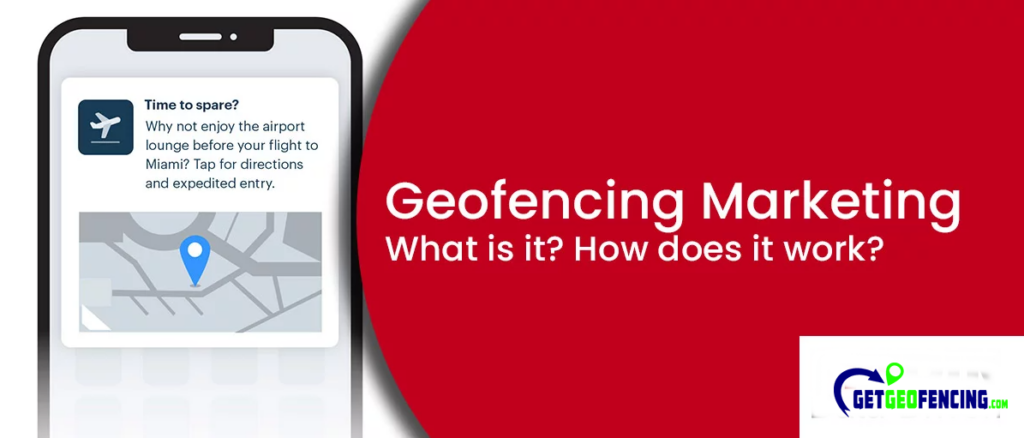
Case studies of businesses that have used geofencing advertising
To further understand the effectiveness of geofencing advertising, let’s explore some real-life case studies of businesses that have successfully implemented this innovative marketing strategy.
- McDonald’s: McDonald’s implemented a geofencing campaign to drive foot traffic to their stores during lunchtime. They created virtual boundaries around their stores and served ads to users who were within a certain radius during lunch hours. The ads included personalized offers and incentives to visit the nearest McDonald’s location. The campaign resulted in a significant increase in store visits and sales during lunchtime.
- Coca-Cola: Coca-Cola utilized geofencing advertising to promote a new product launch. They created virtual boundaries around specific events and venues that were popular among their target audience. Users who entered the designated areas were served with ads featuring the new product, along with personalized messages encouraging them to try it out. The campaign generated high levels of engagement and increased brand awareness among the target audience.
- Honda: Honda implemented a geofencing campaign to promote their latest vehicle models. They created virtual boundaries around competitor dealerships and served ads to users who were near these locations. The ads highlighted the unique features and competitive pricing of Honda vehicles. The campaign resulted in a significant increase in dealership visits and test drives, leading to an uptick in sales.
These case studies demonstrate the effectiveness of geofencing advertising in driving engagement, increasing foot traffic, and enhancing brand awareness. By leveraging the power of location-based technology, businesses can create impactful campaigns that resonate with their target audience and drive tangible results.


